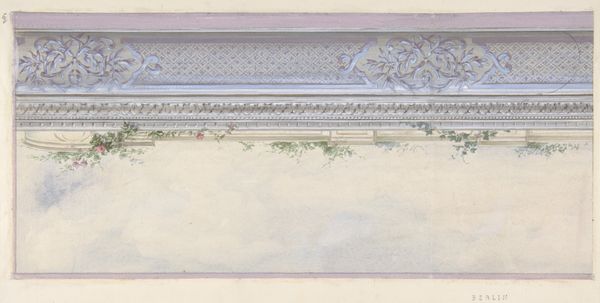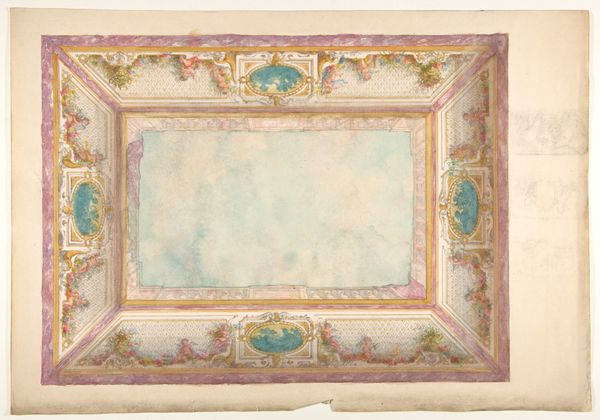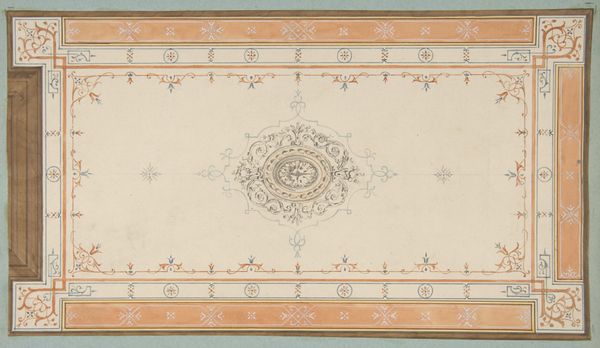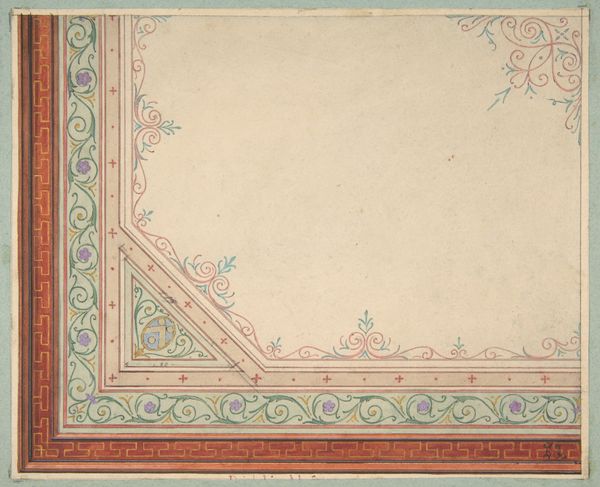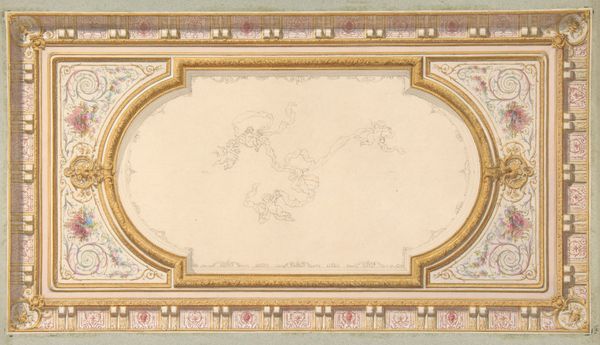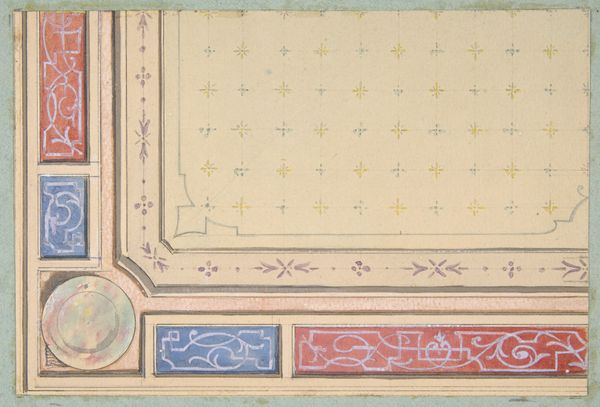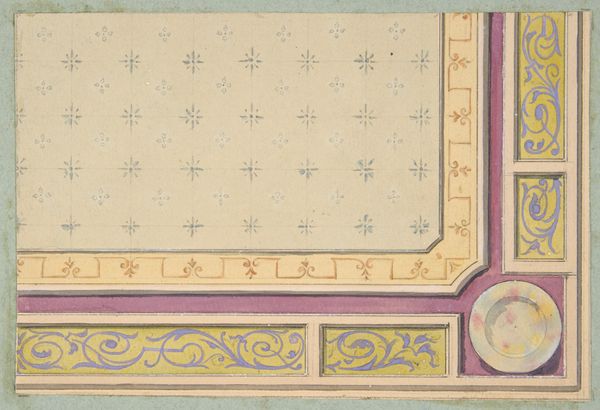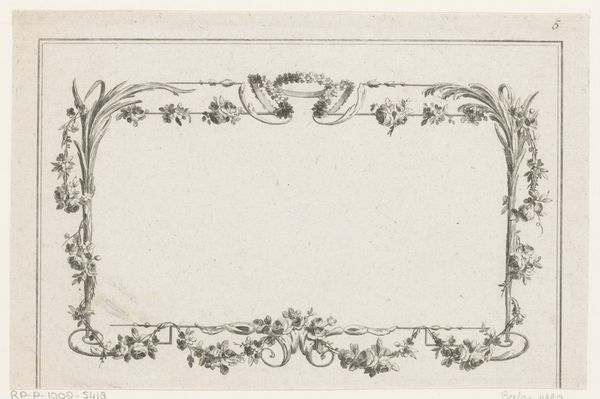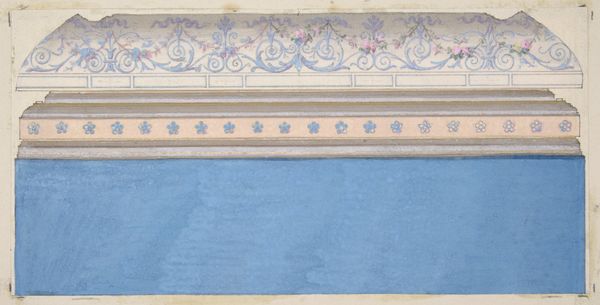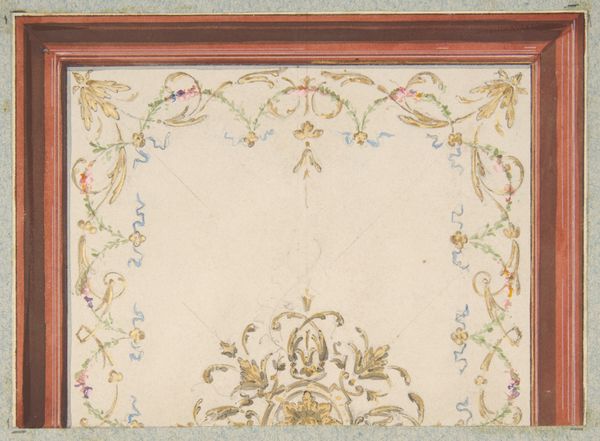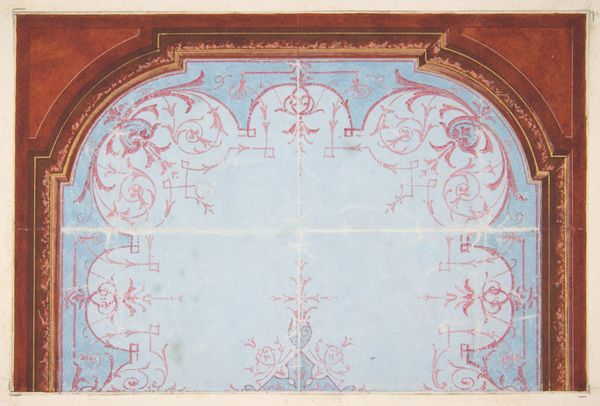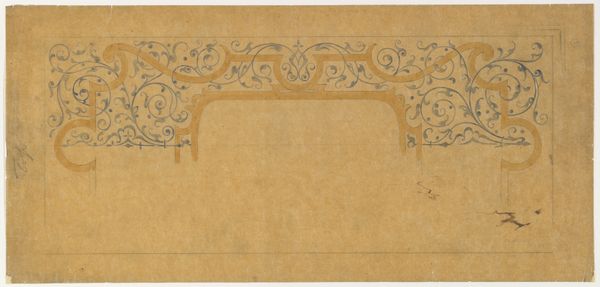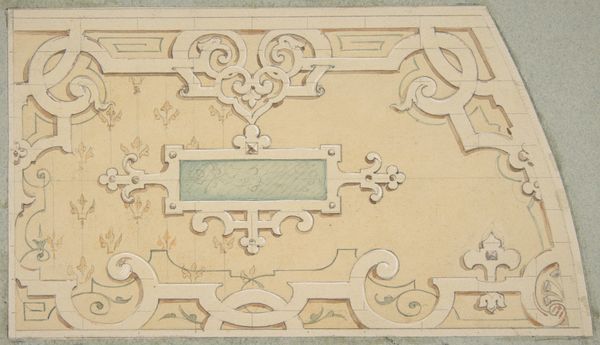
Design for the painted decoration of a ceiling 1830 - 1897
0:00
0:00
drawing, print, watercolor
#
drawing
# print
#
watercolor
#
geometric
#
line
#
decorative-art
Dimensions: Overall: 10 3/8 x 14 3/4 in. (26.3 x 37.5 cm) image: 5 3/16 x 8 3/4 in. (13.2 x 22.2 cm)
Copyright: Public Domain
Curator: Here we have "Design for the painted decoration of a ceiling" by Jules-Edmond-Charles Lachaise, dating from 1830 to 1897. The piece is currently located at the Metropolitan Museum of Art. Editor: It’s funny; it looks less like art and more like an architect's detailed technical drawing. Almost austere with the light wash of colors. Curator: Precisely. Lachaise, within his time, was heavily influenced by the decorative art movement which championed refined craftsmanship for public spaces, directly reflecting civic pride and order through design. Editor: Interesting, given it's primarily watercolor, drawing, and print. I am drawn to the labor that must have gone into creating the intricate patterns within this framework; there is such repetition and consideration of geometric shapes that I cannot begin to image the painstaking process of its design, let alone application to a physical architectural space. Curator: Right! It's quite interesting to view how public institutions fostered these movements of fine artistry as well. These pieces promoted social progress alongside aesthetic movements; what statements might we infer from an era that invested significantly in art within architecture? Editor: You bring an interesting question, as its function goes beyond decoration. Art elevated through skilled craft became a standard expectation, one assumed in public constructions of that time. The real question lies in the kind of skill necessary to deliver an exceptional quality on an artistic scale. Curator: Indeed, the level of talent is striking. Notice also how, while being essentially a sketch, it presents a complete, imagined environment. This really challenges the common ideas about 'high' and 'low' art. It certainly speaks of Lachaise's unique social perspective within an ever changing art industry, which seems to blur the line between design and artistry.. Editor: Ultimately, appreciating how it might transition from design to the physical installation within spaces forces consideration of artistry existing for communal use, adding value far exceeding that of decoration alone. It has the capacity to elevate any public structure through the pure means of design. Curator: Right. This subtle but effective method certainly had social implications by elevating everyday buildings for public consumption; not just artistry for elite audiences. Editor: Seeing design not as an abstract creative task but rooted and implemented with its functionality adds incredible importance when interpreting historical artifacts such as this!
Comments
No comments
Be the first to comment and join the conversation on the ultimate creative platform.

